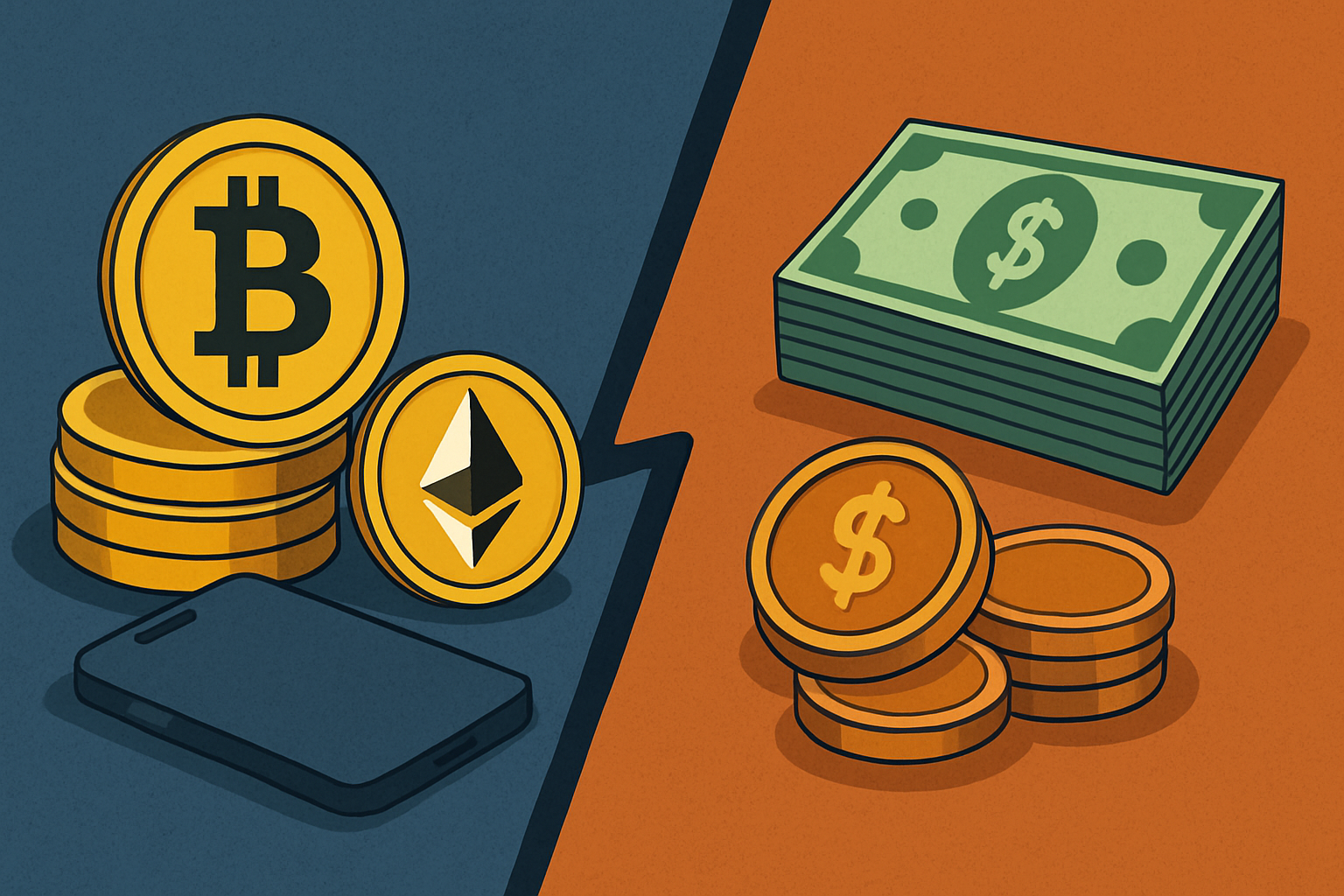Money is something we all use every day. We use it to buy food, pay rent, and save for the future. But in today’s world, money comes in different forms. You’ve probably heard of cryptocurrency—a new kind of digital money. But how does it compare to the traditional money we’ve used for centuries?
In this article, we will explore the key differences between crypto and traditional money, using simple words and easy examples.
Contents
- 1 What Is Traditional Money?
- 2 What Is Cryptocurrency?
- 3 1. Control and Issuance
- 4 2. Physical vs Digital
- 5 3. Security and Transparency
- 6 4. Transaction Speed and Cost
- 7 5. Privacy
- 8 6. Stability
- 9 7. Usage and Acceptance
- 10 8. Legal and Regulation
- 11 Which One Is Better?
- 12 Final Thoughts
- 13 Share a link:
- 14 Like this:
What Is Traditional Money?
Traditional money, also called fiat currency, is the kind of money most people use every day. Examples include the US dollar (USD), Euro (EUR), and Japanese yen (JPY).
Governments print and control this type of money. Central banks (like the Federal Reserve in the U.S.) decide how much money should be in circulation. Traditional money is physical (cash, coins) and digital (money in your bank account).
You can use traditional money to:
Buy goods and services
Save in a bank
Pay taxes
Get paid for work
What Is Cryptocurrency?
Cryptocurrency, or crypto, is digital money that works without a central authority like a government or a bank. It is based on a technology called blockchain, which is a public, secure digital record.
The most well-known cryptocurrency is Bitcoin (BTC). Others include Ethereum (ETH), Litecoin (LTC), and Solana (SOL).
Crypto can be used to:
Buy products or services (where accepted)
Send money to others, even across borders
Invest or trade
Use in decentralized apps (dApps)
1. Control and Issuance
Traditional Money: Issued and controlled by governments and central banks. They decide how much money is printed and what rules apply.
Crypto: Created by computer code and maintained by a network of users. No single person, company, or government controls it.
Example: The U.S. government can print more dollars if needed. But with Bitcoin, only 21 million coins will ever exist.
2. Physical vs Digital
Traditional Money: Can be both physical (like coins and bills) and digital (online banking).
Crypto: 100% digital. There are no physical coins or bills. You store it in a digital wallet.
3. Security and Transparency
Traditional Money: Banks keep records, but you can’t see every transaction in the system. It relies on trust in banks and governments.
Crypto: All transactions are recorded on a public blockchain. Anyone can see them. This adds transparency and helps prevent fraud.
4. Transaction Speed and Cost
Traditional Money: Sending money, especially internationally, can be slow and expensive. It may take days and include high fees.
Crypto: Can be faster and cheaper, especially for cross-border payments. Some cryptos process transactions in seconds.
5. Privacy
Traditional Money: Your identity is usually connected to your bank accounts and transactions.
Crypto: You don’t need to give personal information to use crypto. Transactions are anonymous but still visible on the blockchain.
6. Stability
Traditional Money: Generally stable. Central banks try to keep the value of money steady.
Crypto: Can be very volatile. Prices can go up or down quickly. It’s riskier but can also offer higher rewards.
7. Usage and Acceptance
Traditional Money: Widely accepted everywhere—stores, restaurants, online shopping.
Crypto: Still growing in acceptance. Some businesses accept crypto, but many do not (yet).
8. Legal and Regulation
Traditional Money: Fully legal and backed by governments. There are strong laws to protect users.
Crypto: Laws vary by country. In some places it’s legal, in others it’s restricted or banned.
Which One Is Better?
It depends on your needs. Traditional money is stable and accepted everywhere. Crypto offers speed, privacy, and new technology, but comes with risks.
Many people today use both. They keep their main savings in traditional money and use crypto for investing or specific purposes.
Final Thoughts
Cryptocurrency is changing the way we think about money. While traditional money is familiar and safe, crypto is opening new doors. Understanding the differences can help you make better financial decisions.
Whether you’re just curious or thinking about using crypto, this guide should give you a good starting point. Always do your own research before investing or using cryptocurrency.
